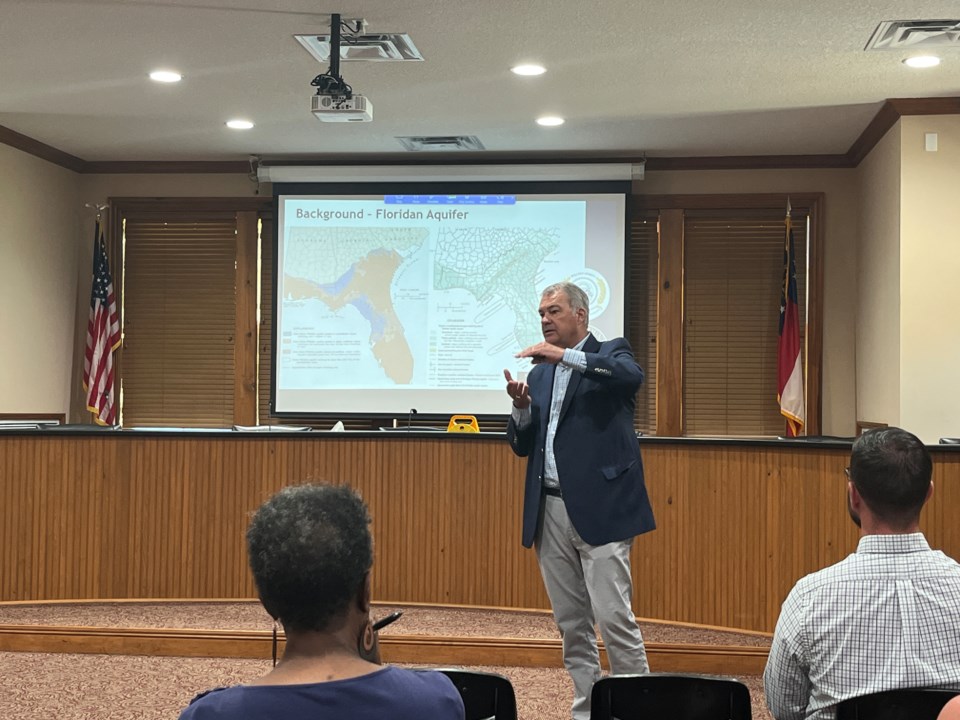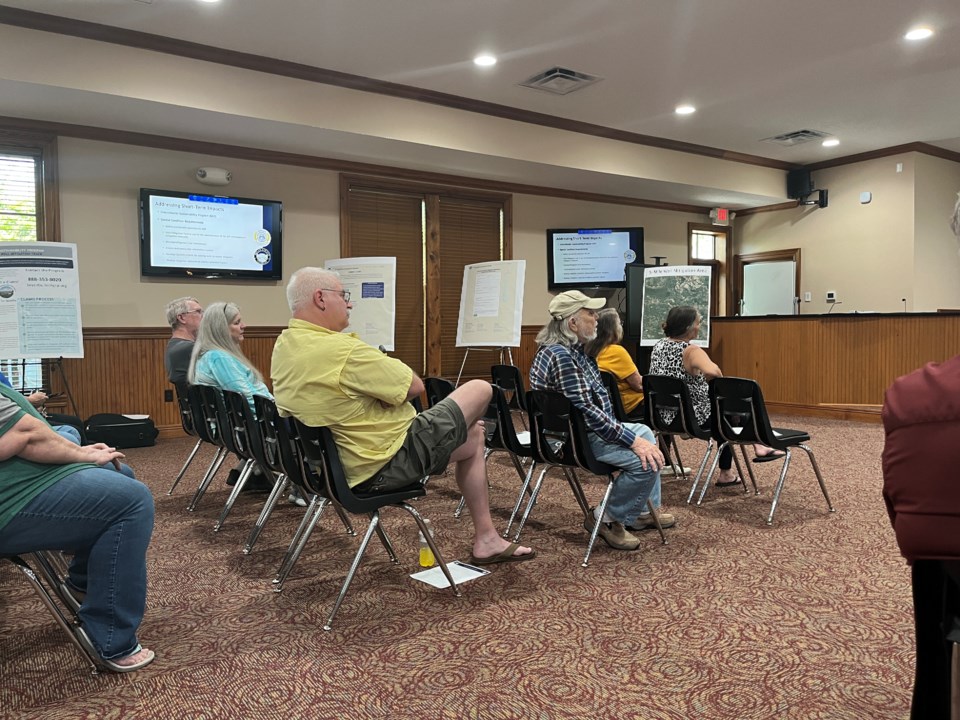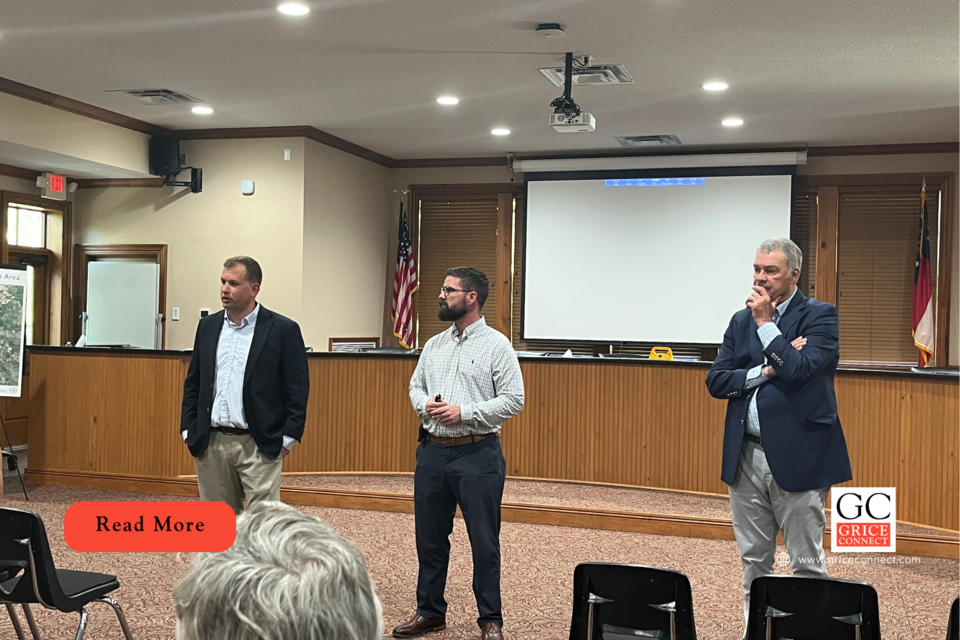As permitted groundwater withdrawals near operational status in Bulloch County, the Bryan-Bulloch Groundwater Sustainability Program (GSP) hosted its first public workshop Monday evening at the Bryan County Board of Education building. Local leaders, consultants, and residents gathered to walk through the plan designed to address possible drawdowns in private wells located near four new deep production wells permitted by the Georgia Environmental Protection Division (EPD).
The meeting followed an earlier advisory committee session and featured a detailed presentation from GSP managers James Pope (Bulloch County) and Paul Teague (Bryan County), along with longtime water utility consultant Tony Rojas. The presentation outlined both the short-term mitigation process and long-term water supply plans for the Hyundai Metaplant and related developments in the region.
The four wells, two owned by Bryan County and two by Bulloch, are located in southeast Bulloch County. They are permitted to withdraw a combined 6.625 million gallons per day (MGD) from the Floridan aquifer. According to presenters, actual usage is expected to begin well below that maximum.
The first well is projected to become operational in July 2025, with the others phased in through early 2026.
Purpose of the Program
The GSP was established as a condition of the EPD permits to ensure private and agricultural well owners within a five-mile radius of the new production wells are protected. If a qualifying well is significantly impacted by aquifer drawdown, such as reduced water pressure or loss of flow, the program provides assistance through a dedicated $1 million joint mitigation fund.

That fund was jointly contributed by the Bulloch County Development Authority, Bryan County Development Authority, Savannah Harbor-Interstate 16 Corridor Joint Development Authority, and Hyundai Motor Group. An additional per-gallon surcharge and state resources are available to replenish the fund if needed.
Several residents raised concerns about the potential for severe aquifer depletion, citing a modeled 19-foot drawdown near the center of the cone of depression. Program leaders emphasized that the 6.625 MGD, 24/7 operation scenario was used only for EPD’s worst-case impact modeling, not real-world scheduling.
In fact, as Tony Rojas explained, the wells will be phased in gradually and operated in rotation, not simultaneously. Initial usage from Hyundai and associated industrial partners is expected to reach around 3.8–4.0 MGD by 2028, with early operations requiring far less.
“It’s not like we’re going to build all these wells and start pumping 6.625 [MGD] on day one,” Rojas said. “They’ll be brought online one at a time, and rather than operating continuously, they'll be run in shifts depending on water demand.”
The modeling results, based on all four wells running at full capacity continuously, predicted a maximum drawdown of 19 feet at the center, tapering to around 10 feet at the five-mile edge. These levels remain well above the typical pump placement depth of 30–50 feet below the static water level. The GSP’s aim is to proactively respond to any outlier cases.
Officials noted that this is the first program of its kind in Georgia. While similar mitigation strategies are more common in western U.S. states where water scarcity is severe, this program represents a proactive step by local governments and the state to balance industrial development with community resource protection.
Public Concerns and Questions
During the workshop’s Q&A period, residents asked pointed questions about eligibility, drawdown modeling accuracy, and what happens if they fall just outside the five-mile mitigation zone.

One resident noted that while their home was 5.4 miles from the center point (I-16 and Hwy 119), modeling still projected a drawdown near 9.8 feet. Program staff acknowledged the concern and noted that the current boundary is a five-mile radius, but suggested adjustments could be considered based on real-world data once the wells come online.
Others asked about the well registration effort, which is ongoing. Program leaders stressed that registration is not required to be eligible for mitigation but is highly encouraged to improve response efficiency.
Residents also asked whether they would be reimbursed or allowed to use their own well driller. Pope and Rojas explained that the primary approach will involve a roster of on-call licensed well drillers who are under contract to respond quickly. However, the program may also allow homeowners to use their own preferred contractor if eligibility is verified and liability waivers are signed.
“We’re trying to make it as easy as possible for folks,” said Rojas. “If someone wants to use their own driller and the problem qualifies, we may be able to just write a check and let them handle it directly.”
Long-Term Planning: Surface Water Supply on the Horizon
While the GSP exists to manage impacts during the early years of aquifer withdrawals, the state’s long-term plan is to transition to surface water drawn from the Savannah River. Funded through a combination of grants and low-interest loans, a new treatment plant in Effingham County and a pipeline from Savannah are expected to serve the Hyundai Metaplant within 5–7 years.
Once operational, this alternate water source is expected to replace or significantly reduce reliance on the permitted wells, further reducing pressure on the Floridan aquifer.
Next Steps
As of the April 14 meeting, the GSP website (https://bryanbullochgsp.org) is live, allowing residents to:
- Register their wells (voluntarily)
- View an interactive mitigation area map
- Access a digital copy of the full Groundwater Sustainability Program manual
- File a claim if they experience well issues once the production wells are active
The GSP’s mitigation hotline (1-888-353-8020) is also active and monitored daily. Paul Teague and James Pope will continue working with the advisory committee and the public to update and evolve the program as needed.
While the initial workshop served as an introduction, more advisory committee meetings are planned for this summer to assess early feedback and finalize mitigation response plans before the first well becomes active.




